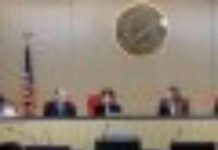In the aftermath of the devastating wind-driven fires that swept through California in January, leaving a trail of destruction in their wake, the urgent need for preventive measures to combat wildfires has never been more apparent. As embers flew from burning hillside brush into residential neighborhoods, setting houses ablaze and causing widespread damage, the critical role of fire safety regulations in protecting homes and lives has come into sharp focus.
One such measure, Assembly Bill 3074, passed by the California Legislature in late 2020, aims to mitigate the risk of fire by mandating that homes in high-risk fire areas establish a five-foot defensible space around them. This new requirement, known as Zone Zero, supplements existing regulations that already call for the clearance of brush and dead leaves within 100 feet of houses. While Zone Zero does not guarantee immunity from fires, it provides homeowners with a crucial line of defense against embers and flames.
However, despite the pressing need for these regulations, the implementation of the 2020 law has been delayed. The Board of Forestry and Fire Protection, responsible for drafting the rules and regulations for Zone Zero, has yet to finalize the guidelines, despite having had four years to do so. This delay is not only concerning but also reflects a lack of urgency in addressing an issue that poses a significant threat to communities across the state.
The crux of the matter lies in the complexity of determining what materials and structures should be allowed or prohibited within the five-foot defensible space. Questions regarding the use of combustible materials, such as wooden fences, planters, and window frames, remain unresolved, leading to a prolonged period of indecision and inaction. While considerations about the financial implications for homeowners are valid, the need for swift and decisive action cannot be overstated.
Christine McMorrow, a spokesperson for Cal Fire, emphasized the importance of prioritizing mitigations that offer the most significant impact while also focusing on educating the public about the rationale behind these regulations. By emphasizing the importance of public awareness and engagement, the Board of Forestry and Fire Protection can empower homeowners to take proactive steps to safeguard their properties against the threat of wildfires.
Despite the challenges and delays in finalizing the Zone Zero regulations, the urgency of the situation calls for immediate action. With fires growing increasingly intense and destructive, the need for comprehensive fire safety measures has never been more critical. By implementing Zone Zero regulations, homeowners can enhance the resilience of their properties and create a safer environment for their families and communities.
Expediting the Rulemaking Process for Zone Zero
As the Board of Forestry and Fire Protection continues to deliberate on the specifics of the Zone Zero regulations, the need for expediting the rulemaking process becomes increasingly apparent. Governor Gavin Newsom’s executive order to accelerate the drafting and public comment period for the regulations underscores the sense of urgency surrounding this issue. By streamlining the regulatory process and providing clear guidelines for homeowners, the state can make significant strides in enhancing fire safety measures and protecting vulnerable communities.
Empowering Communities through Local Initiatives
While the state works to finalize the Zone Zero regulations, local jurisdictions have the opportunity to take proactive measures to enhance fire safety in their communities. By passing their own Zone Zero regulations, cities and counties can create a more resilient built environment and reduce the risk of fire-related disasters. Encouraging homeowners to implement defensible space measures, even in the absence of statewide regulations, can help create a culture of safety and preparedness that benefits entire neighborhoods.
In conclusion, the imperative to prioritize fire safety measures, such as Zone Zero regulations, cannot be overstated. By taking proactive steps to mitigate the risk of wildfires and protect vulnerable communities, California can build a more resilient and sustainable future for all its residents. As the state grapples with the increasing threat of fires, the time to act is now. The safety and security of our homes and neighborhoods depend on it.




